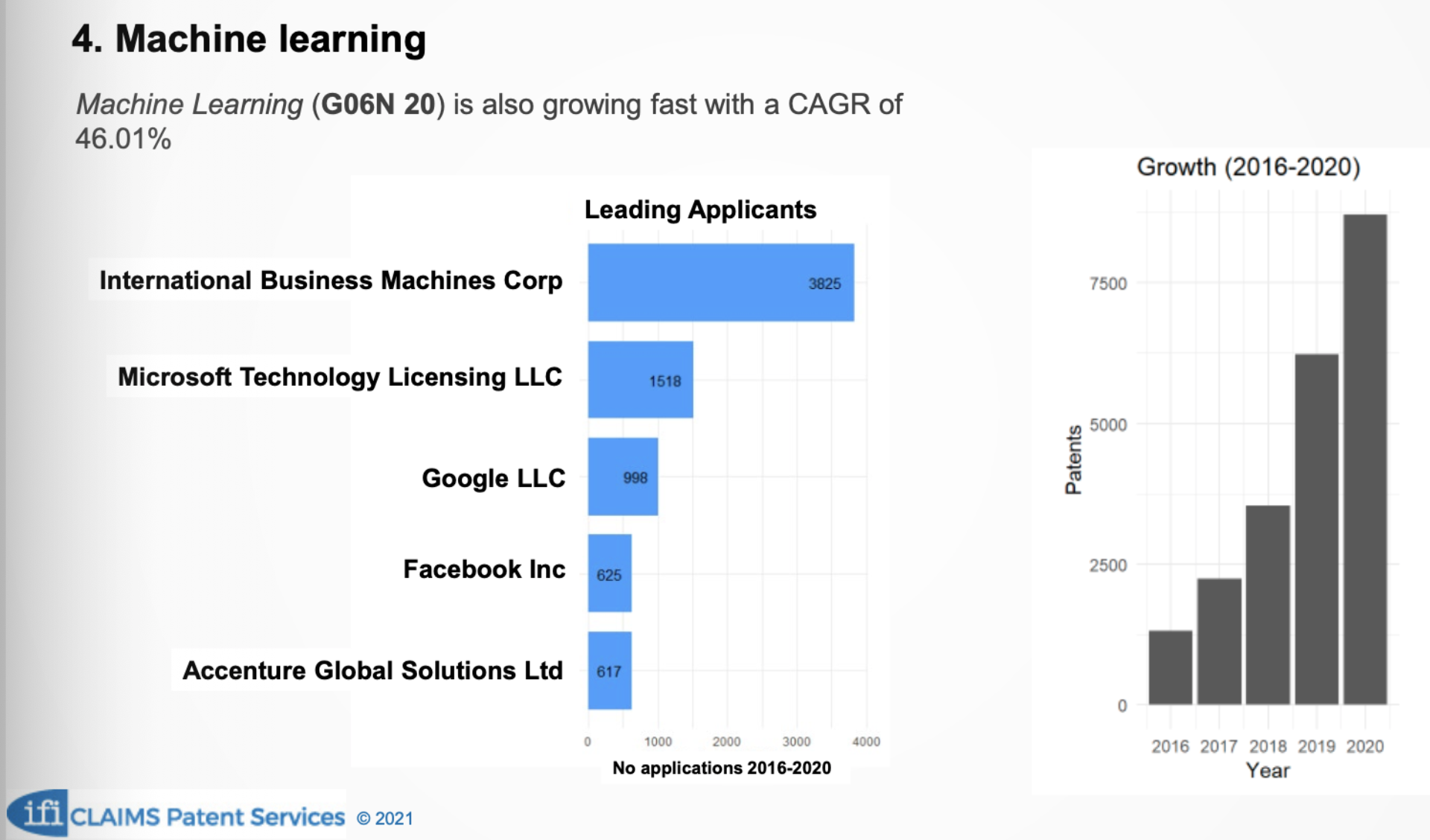AI, Quantum Patents Soared in 2020

Machine learning was among the fastest growing technologies in terms of U.S. patent grants during 2020, an annual survey reveals.
AI and machine learning ranked fourth in a list of patent applications and awards, followed closely by advances in quantum computing. Meanwhile, China, Taiwan and South Korea registered the largest percentage increases in patent grants over the past year, IFI CLAIMS Patent Services announced this week. The 33-page IFI CLAIMS Patent Services report details the 10 fastest growing technologies over the past year.
Samsung Electronics continued to lead the world with the largest patent portfolio, an “ultimate owner” category that also includes patents held by subsidiary companies. IBM was a distant second in the global patent race, but maintained its decades-old lead in U.S. patent grants, recording 9,130 in 2020, according to the report. The company also claimed the most intellectual property generated in key technology sectors such as AI, cloud, quantum computing and data security technologies.
Based on IFI’s analysis, IBM said it earned more than 2,300 AI patents in 2020 in areas ranging from natural language processing and automation to trusted AI algorithms. Most are being integrated into its flagship Watson platform.
Among the company’s quantum patents was a technique for mapping molecular simulations on a quantum computer. Another focused on using quantum technology to perform risk analysis calculations. IBM said this week it is collaborating with financial institutions to advance the risk framework.
While trailing technologies such as angiosperms, or hybrid seeds, and computer systems based on biological models—ranked No. 1 in patent grants—machine learning patents are growing at the fastest compound annual growth rate, IFI reported, at just over 46 percent.
IBM was far and away the leader in U.S. patent applications followed by Microsoft, Google, Facebook and Accenture Global Solutions (see chart). For example, IBM and Microsoft were both awarded U.S. patents for machine learning tools used in code development.
The top categories for technology patents over the last year included “electrical digital data processing,” a broad heading that includes computing, image processing, networking and materials science. Telecommunications, including wireless networks, along with semiconductors and chip packaging constituted the other largest technology category.
At the same time, semiconductor powerhouses in South Korea and Taiwan accounted for some of the fastest rates of growth in U.S. patent grants, the IFI CLAIMS reported.
The patent survey also identified a growing number of patent awards in emerging areas such as climate change mitigation and technologies for reducing greenhouse gases.
Rounding up the list of top U.S. patent assignees in 2020 were, in descending order: Canon Inc., Microsoft, Intel, Taiwan Semiconductor, LG Electronics, Apple, Huawei Technologies and Qualcomm.
“Overall, U.S. patent activity was down slightly last year, despite the pandemic,” said Mike Baycroft, CEO of IFI CLAIMS Patent Services. The decline “is a minor downward tick in what’s been a largely upward trajectory we’ve seen over the past decade, and it’s still 13 percent higher than what we saw in 2018.”
Baycroft also noted an increase in “published pre-grant applications,” during 2020. “We’ll have to wait at least another year before we can determine if the pandemic had any impact,” he said.
Related
George Leopold has written about science and technology for more than 30 years, focusing on electronics and aerospace technology. He previously served as executive editor of Electronic Engineering Times. Leopold is the author of "Calculated Risk: The Supersonic Life and Times of Gus Grissom" (Purdue University Press, 2016).











